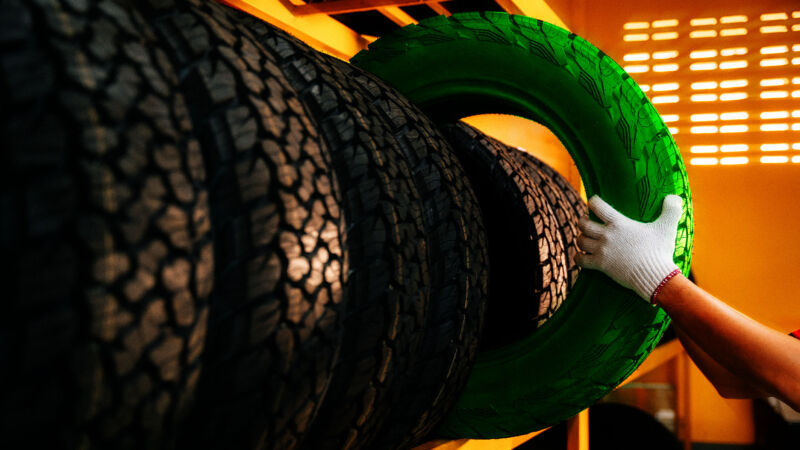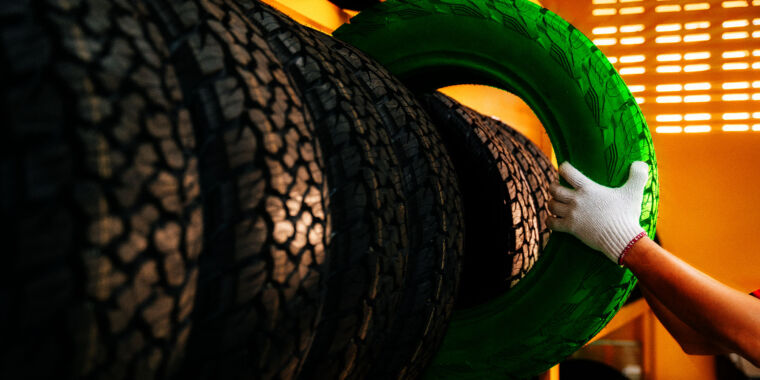
Aurich Lawson | Getty Images
One of the biggest promises of electric vehicles is that they provide relative freedom from constant car maintenance. Gone are oil and filter changes, spark plugs, tune-ups, diesel particulate traps, diesel exhaust aftertreatment fluid, and countless other parts to replace. There’s not even so much as a muffler clamp to deal with.
Well, a funny thing happened on the way to petrol-free motoring bliss. The final piece connecting the car to the road is still a tire, and it still flexes. It uses air and needs to be replaced every so often. And the demands a motor places on traction, load, and noise are quite unique if that motor whirs silently. There’s no way around it: EVs require EV-specific tires.
How are tires for EVs different? We spoke to several tire companies to better understand what ingredients go into the tire oven in the first place and what development testing has proven before the tires hit the street.
Yes, tires intended for conventional internal combustion engine (ICE) vehicles will fit your EV car’s wheels, but using them in this way would be a bad idea. Tires meant for EVs are engineered to withstand the additional weight, dynamic loading, and tractive demands of an EV, among other things. Using non-EV tires will likely result in far more accelerated wear, heat-related issues, and the potential for wheelspin from a rest, which, even with traction control, could conceivably induce a loss of directional stability.
Weight and load
There are some fundamental differences between ICE cars and EVs, even before either car moves. Generally, EVs are heavier than a similarly sized or similarly classed ICE car. For example, the electric Mercedes-Benz EQS 450 4Matic’s curb weight is 5,597 lbs (2,539 kg), while the ICE S500 4Matic weighs just 4,610 lbs (2,091 kg). These cars aren’t on the same platform, but they hold the same size class and sit in the same general segment. The EV is nearly 1,000 lbs (454 kg) heavier due to the simple fact that batteries weigh a lot. The weight issue will improve over time, but for the near future, the basic construction of the tire carcass must be up to the task of supporting such a heavy load.
Many people think that only a tire’s rubber compound or polymers can influence its traction and grip. But in addition to these compounds, the tread pattern, the depth of the tread blocks, and the void volume between them contribute to big changes in a tire’s overall stiffness and load capacity.
On the positive side for static load distribution, that prodigious battery weight is often evenly distributed, front to rear, in the EV. Every silver lining has a cloud, though. If that weight were centralized in a far smaller footprint in the middle of the car, it would benefit the car’s dynamic mass while braking, cornering, and accelerating. A long, wide battery doesn’t help an EV once it’s moving and changing direction rapidly. And since the car is a movable beast, the tire’s dynamic load capacity must be more than up to the task. That means structural stiffness under that EQS’s 5,597 lbs, not just when stationary but while it’s braking, cornering, and accelerating.








